September 30, 2021
Tree Loss Prompts Native Plant Design
How I love the colors of early fall, as big muhly waves its soft, grassy flags and velvety-lavender Mexican bush sage flags down hungry bees, butterflies, and hummingbirds.
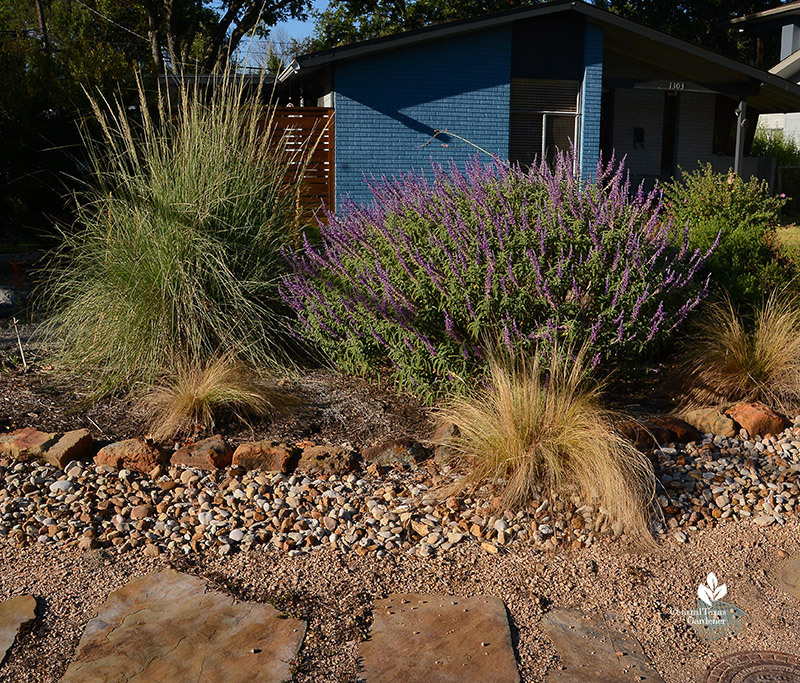
This front yard’s changed a lot since April Rohlich became its steward in 2013. For one thing, she lost a central 180-year-old red oak tree that transformed a shady yard into full sun.
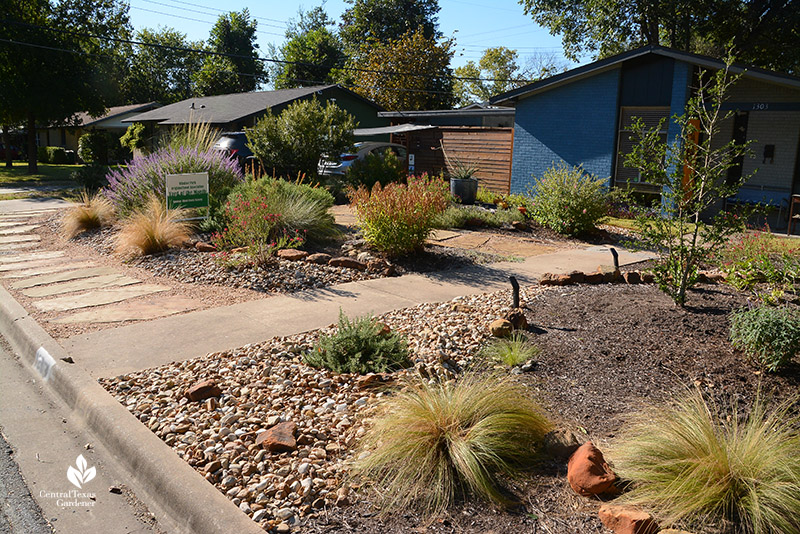
She jumped on this opportunity to create a wildlife haven all year long, removing most of the lawn in favor of native plants. Although initially she enlisted professional help with the design, she selects, updates, and maintains plants. Mexican feather grass, new perennials, and a young yaupon holly dot the right side.
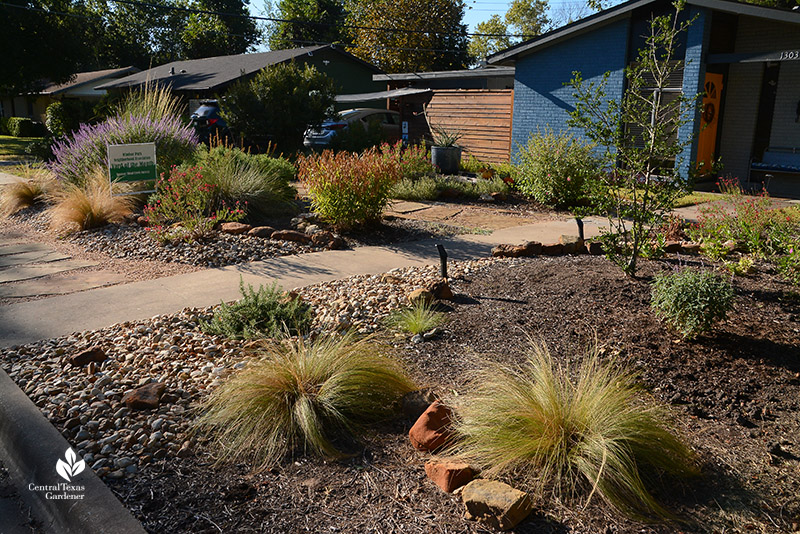
She includes rosemary for its kitchen duty and winter flowers for bees. After February’s freeze toasted our rosemary population, she finally sourced a few. The triangular river stone design suits its preference for dry feet, while contributing another textural dimension.
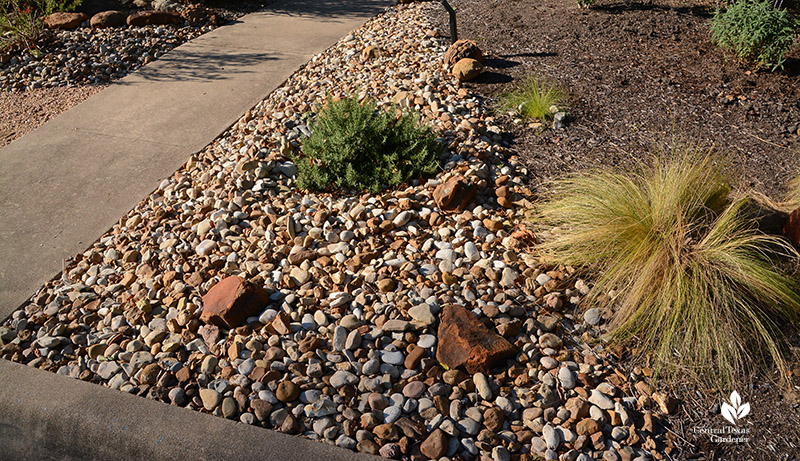
In 2019, she worked with a landscape company to add architectural structure with a hefty stone strolling path. Inland sea oats, Salvia greggii, Mexican bush sage (Salvia leucantha), and big muhly (Lindheimer muhly) vary height, texture, and seasonal color.
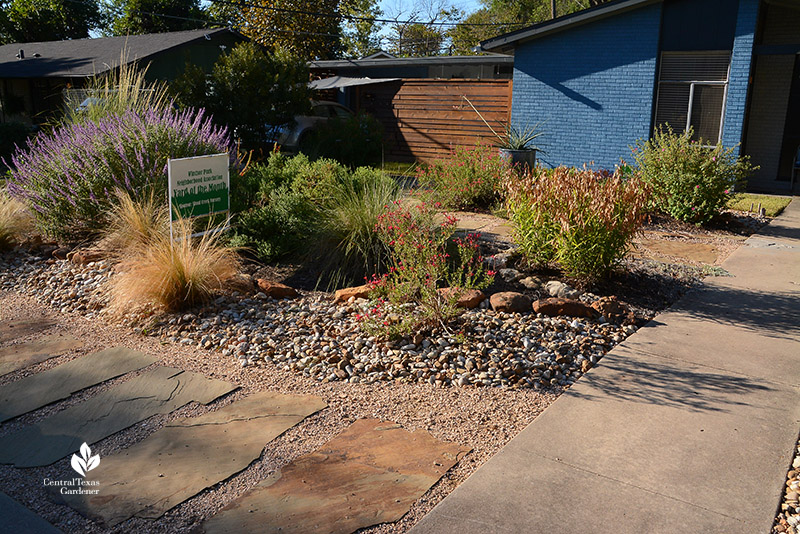
Curbside, the stone path serves as a sidewalk, a feature left out of many streets in this neighborhood, making parking and access safer and easier for guests, delivery folks, and trash pickup.
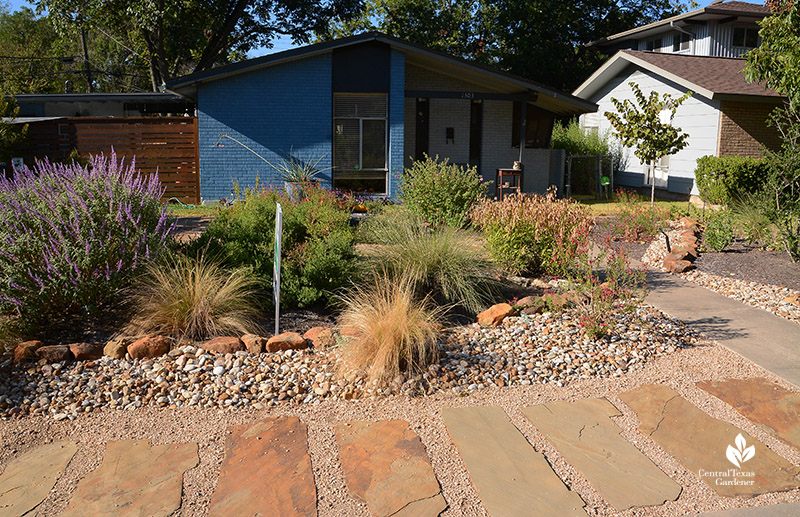
Not only are the plants protected from squashing, the stone “stage” promotes the performance beyond. Since the stones aren’t mortared in, rainfall seeps between the gravel gaps.
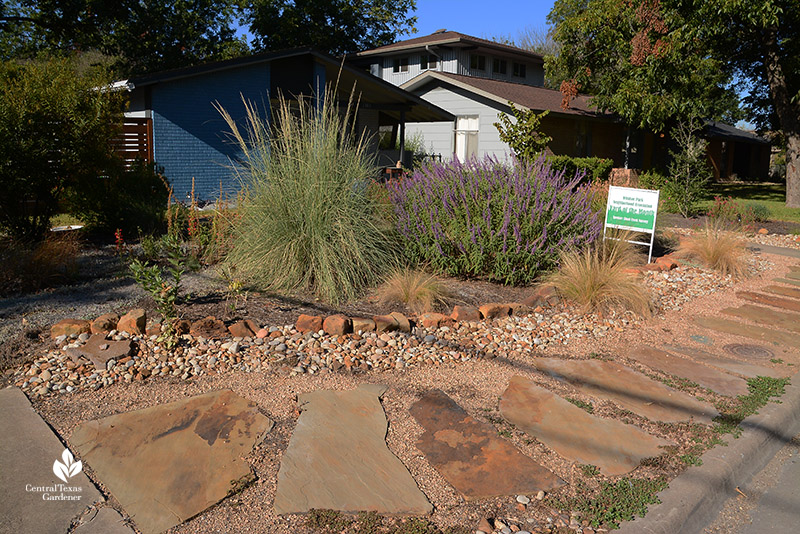
Another stone path off the original concrete sidewalk outlines the island bed, where rock rose (Pavonia lasiopetala) pumps out pink pollinator-invitations from spring to late fall.
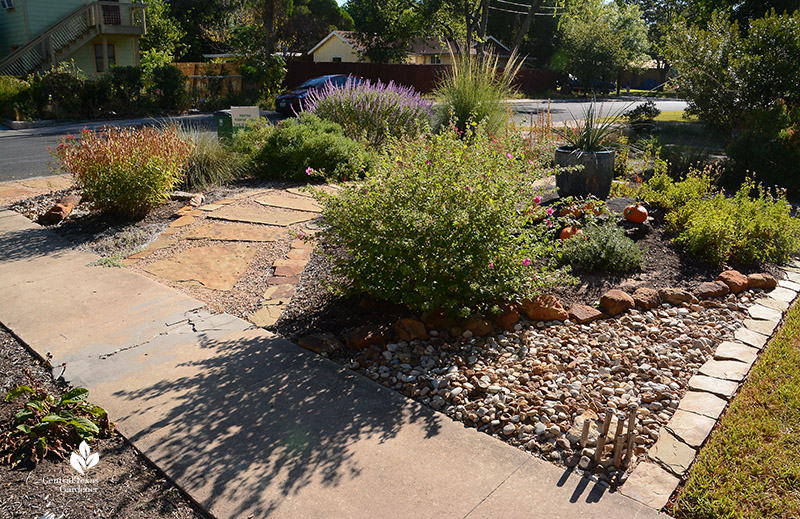
A river stone triangle complements its front curb companion, where April arranged an artistic hose-guard arrangement. She employs no irrigation, instead watering by hand with a hose wand to keep plants hydrated for wildlife that rely on them. Beyond, she kept a narrow strip of lawn for a cooling walkway near the house.
We all get stumped when a tree’s loss totally changes our garden’s persona. April chose the sunny side viewpoint. Now the stump serves as a platform and anchor to an island bed. She rounded it with native plants including rock rose, Gregg’s mistflower, salvias, rosemary, and a red yucca (Hesperaloe parviflora) perched atop the stump in its dusky blue container. And hey, why not drop a few pumpkins for neighborhood fall spirit?
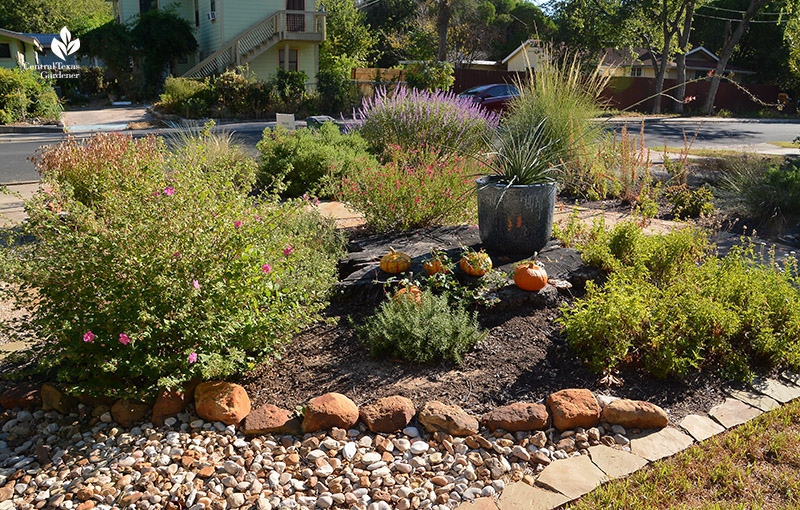
At the far right, Gregg’s mistflower’s (Conoclinium greggii) frothy flowers entice Queen butterflies and others to congregate in fall.
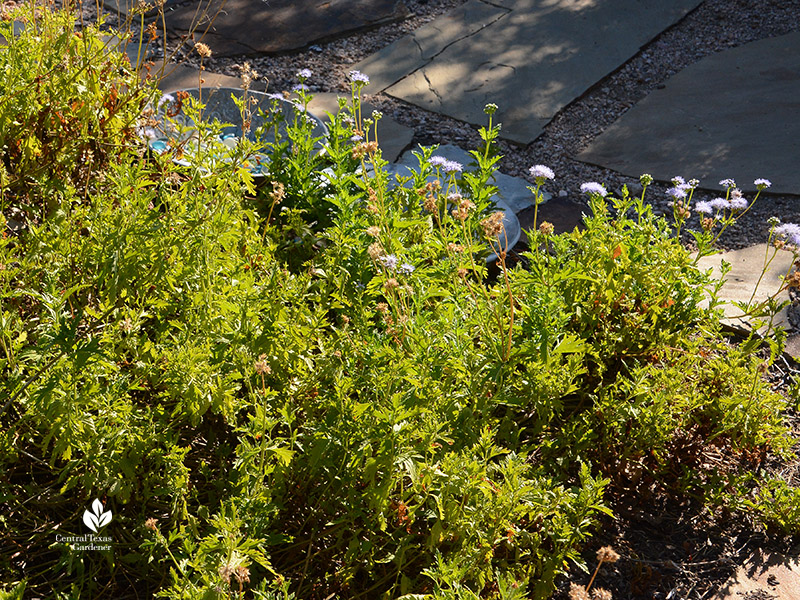
Just a few days earlier, I got my first look at a white-striped longtail skipper checking it out. Thanks to April for the ID!
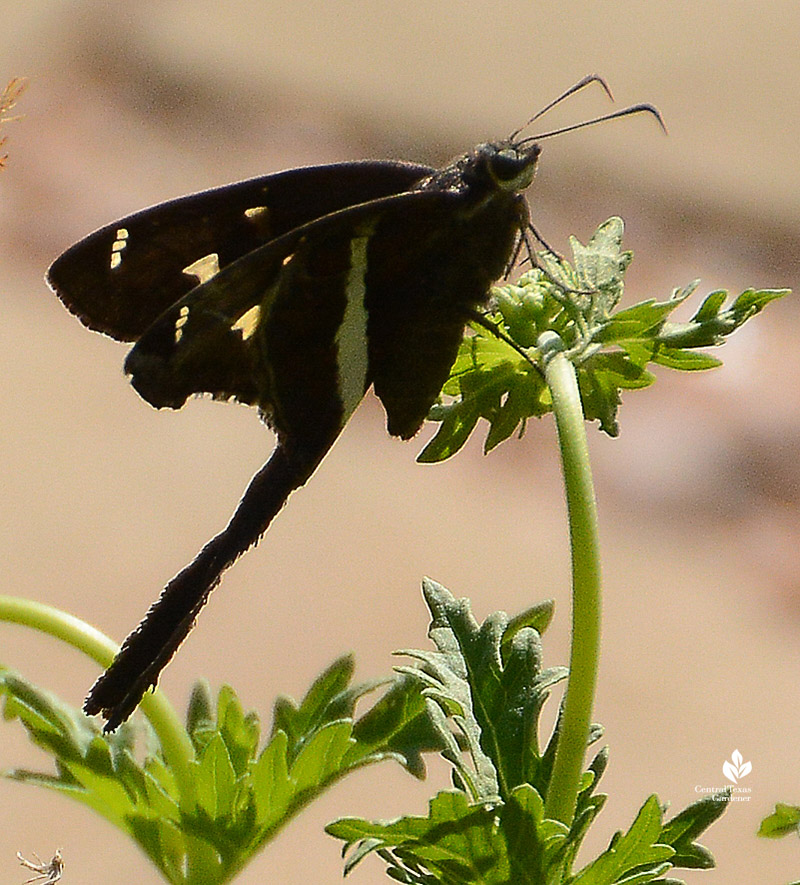
Although this little front yard habitat pocket doesn’t need tons of water (but all plants in our summers need water), April makes sure that her wildlife can get a drink, too. She scatters shallow thrift store bowls around, adding pebbles to prevent bees or baby toads from drowning.
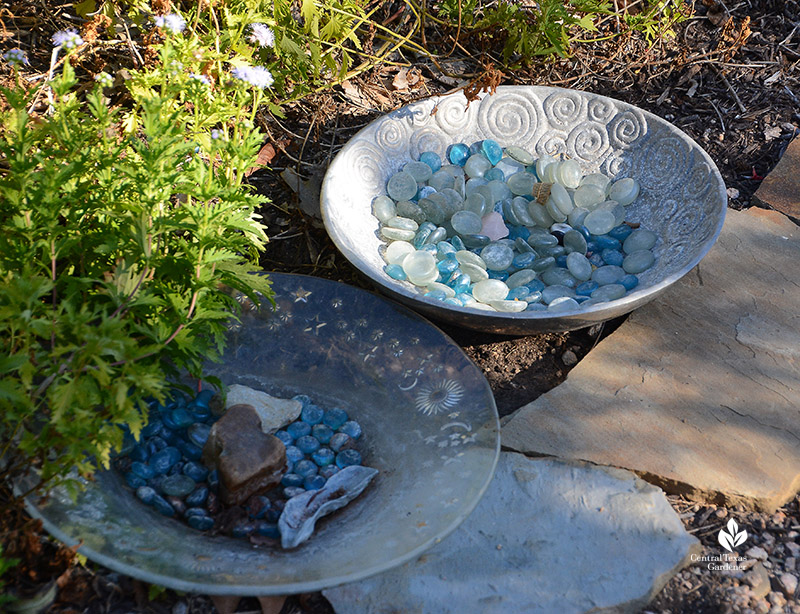
At the front, pink Salvia greggi anchors groundcover blackfoot daisy that’s still recovering from the hard freeze. It’s now spreading, but April added four-nerve daisy (now out of bloom) to fill in temporary gaps.
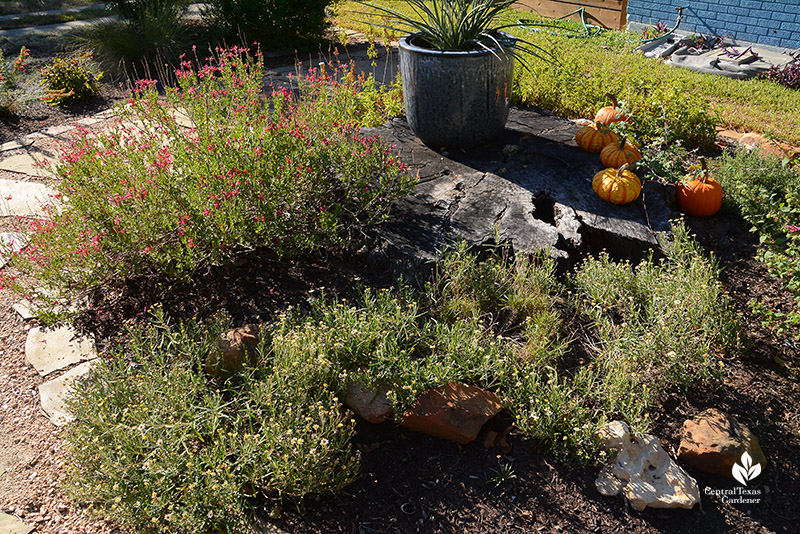
The path allows viewpoints and maintenance on both sides of the aisle. On the left: inland sea oats, fall aster about to bloom, Mexican bush sage, and big muhly.
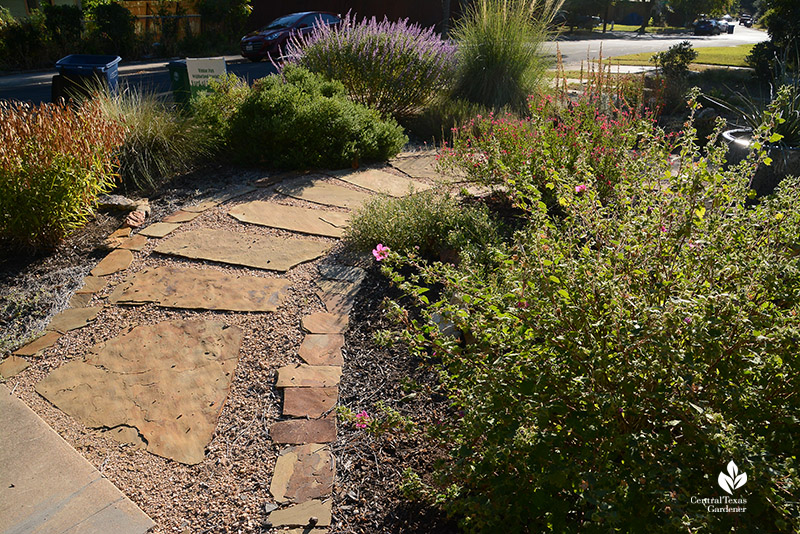
I really like the finishing touch with edging flagstones.
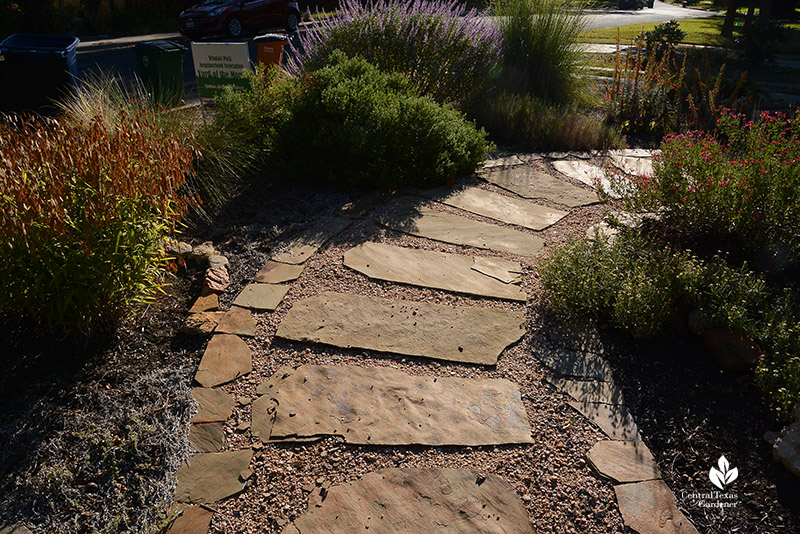
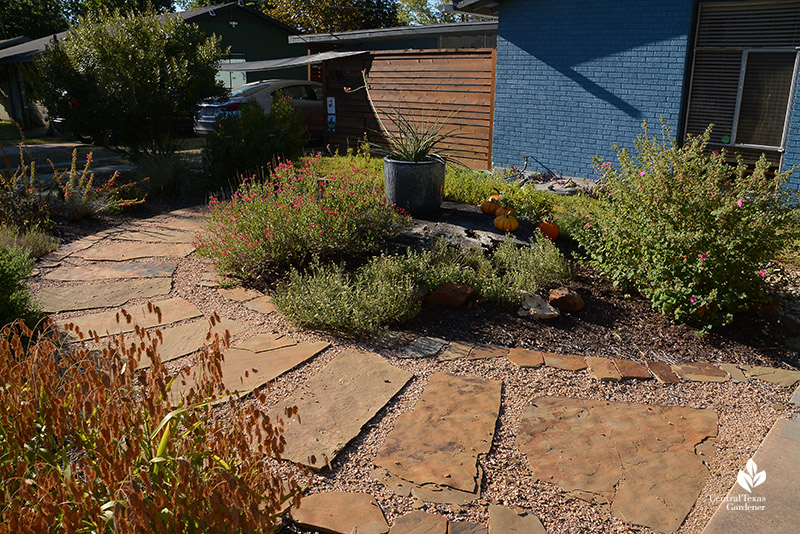
Heading back to the front, biennial standing cypress on the right is just about done for the season, though still enough flowers for migrating hummingbirds.
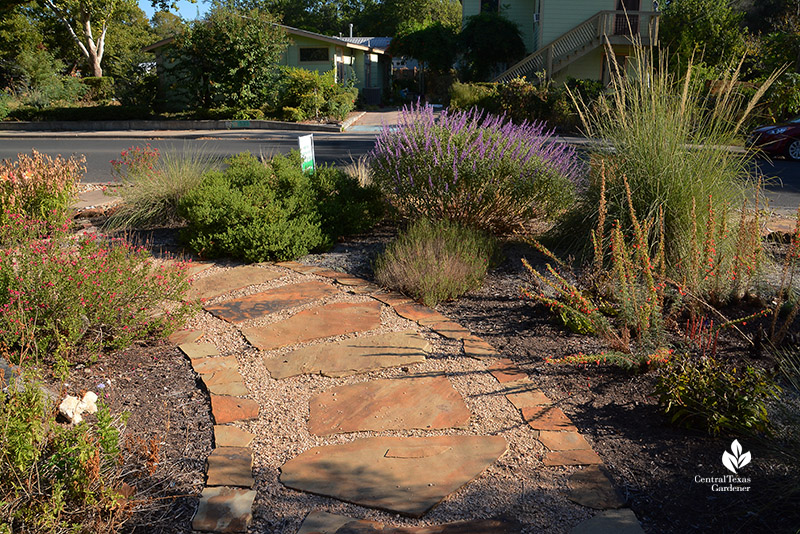
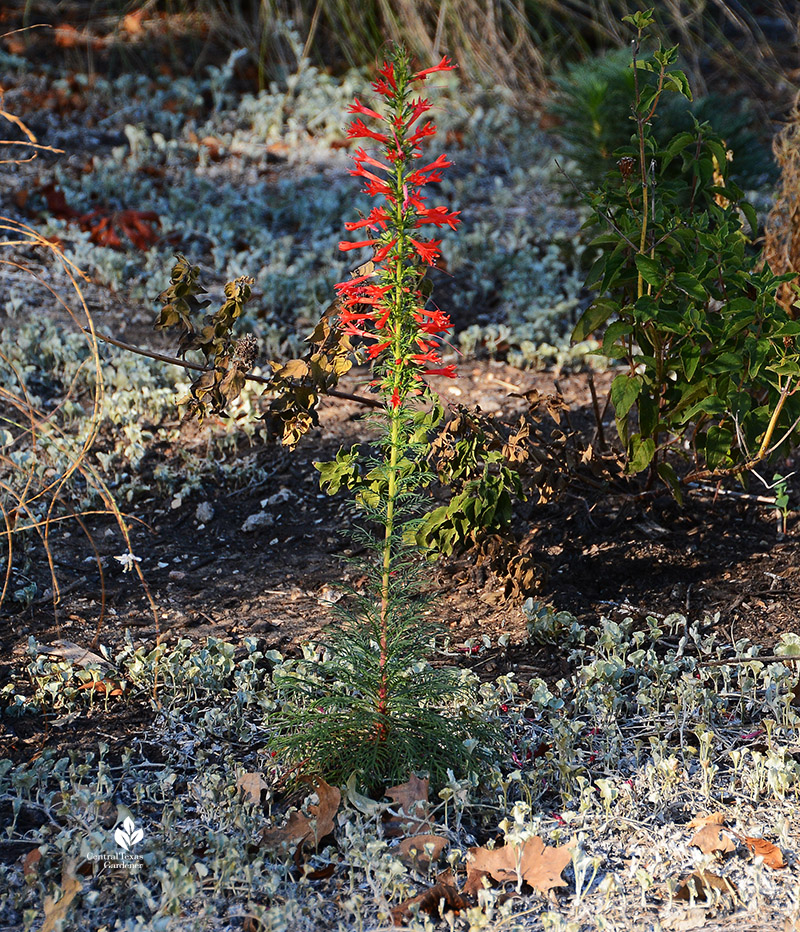
Below it, April repurposed red chopsticks into a miniature art “installation!”
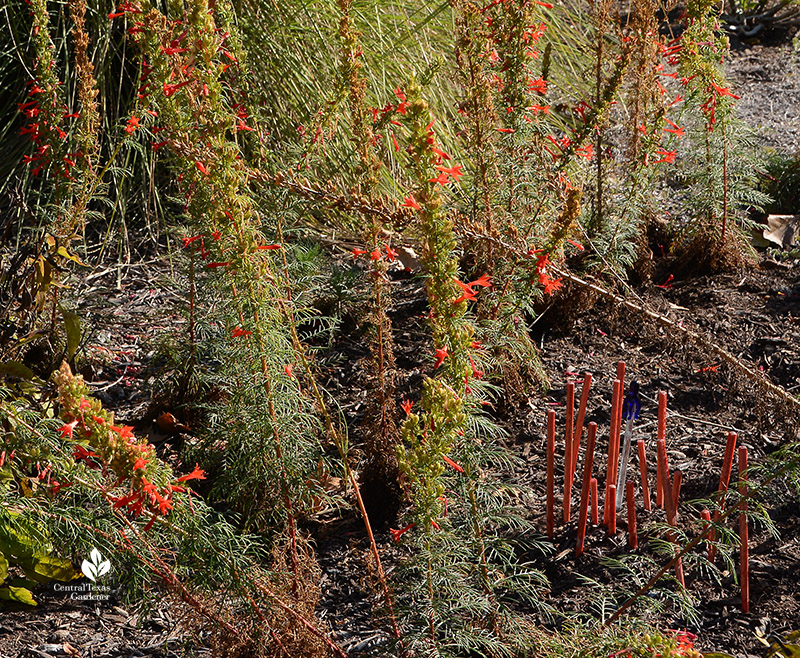
Since native milkweeds can be hard to source, April ordered her green milkweeds (also called green antelope horn) from the Monarch Watch Milkweed Market. When you enter your zip code, they pick the ones that work in your area.
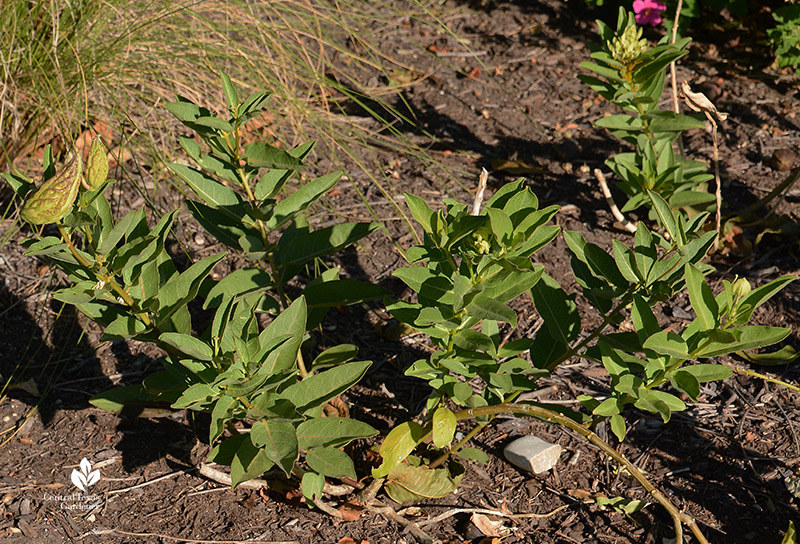
Since you must buy lots of them (seems like it was 50 when I looked last fall—site not registering order info right now, so check back), April shared her plants with her neighbors. Now, that’s a spectacular neighborhood wildlife “highway!” AND, seed pods promise more to come, even better!
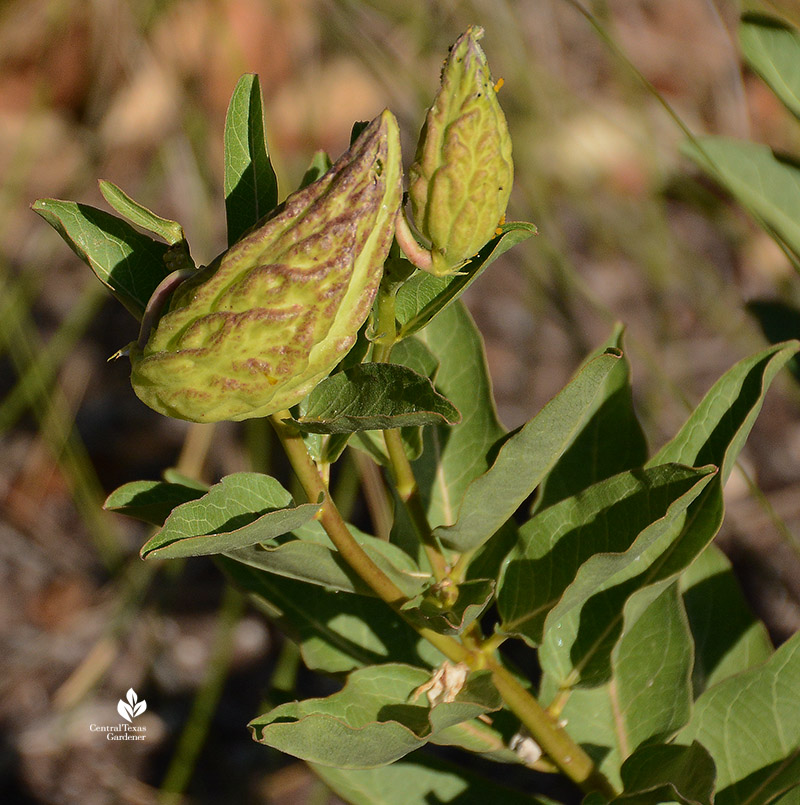
You can also find lots of native plants at the Wildflower Center’s Fall Plant Sale: September 24 – November 7.
Also at the Wildflower Center on October 10: John Hart Asher presents his fabulous “Intro to Pocket Prairies” from 10 a.m. – noon. Registration is $35 (members receive discount) and space is limited.
And, check out the Hays County Master Gardeners’ Fall Plant and Tree Sale. This year, the sale is online and in-person at two locations.
Oct. 9: Kyle Public Library
Oct. 13: Dripping Springs Farmers Market
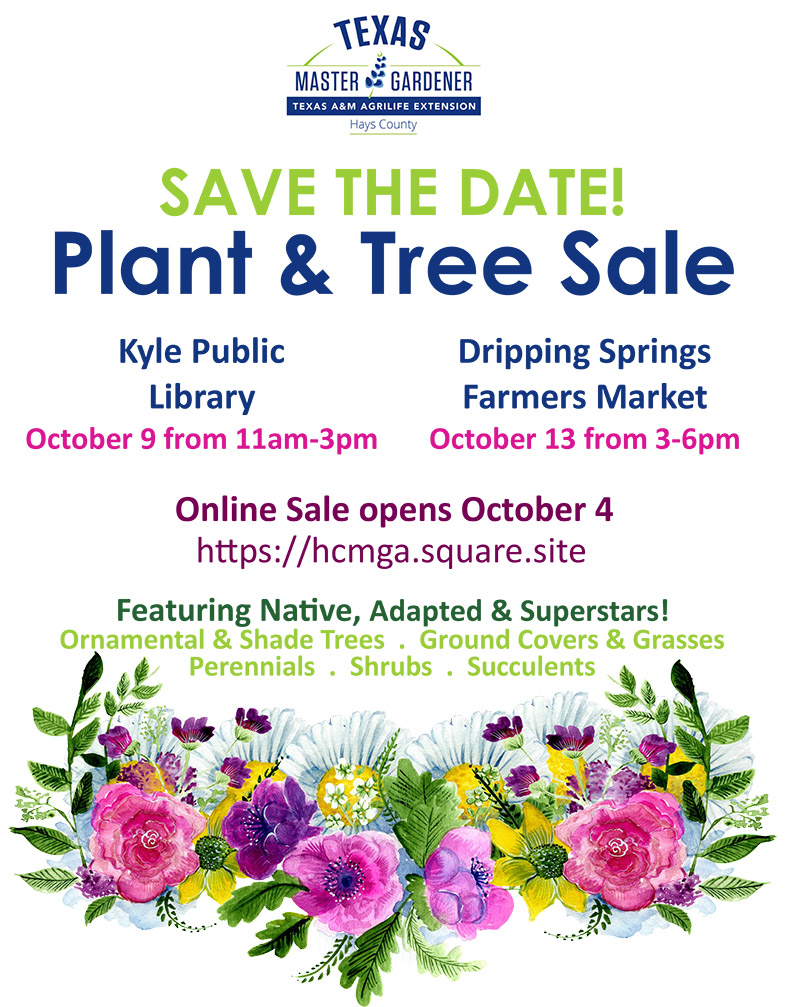
Thanks for stopping by and happy pollinator planting! Linda

